|
 Dwight Peck's personal website Dwight Peck's personal website
Ten wintry days in the South of France
Montpellier, Arles, the Camargue, and lots of et cetera
You may not find this terribly rewarding unless you're included here, so this is a good time for casual and random browsers to turn back before they get too caught up in the sweep and majesty of the proceedings and can't let go.
Nîmes at New Year's 2015: Cathedral, Maison Carrée, Jardins de la Fontaine

We've come southeastward from the Cévennes to devote a post-New Year's Eve day to dashing about Nîmes and then catch the A7 autoroute north, and here we are peeking out of the Hôtel Kyriad Nîmes near the city centre -- smallest room I've ever seen, but a convenient location, reasonable price, garage parking, and nice people.
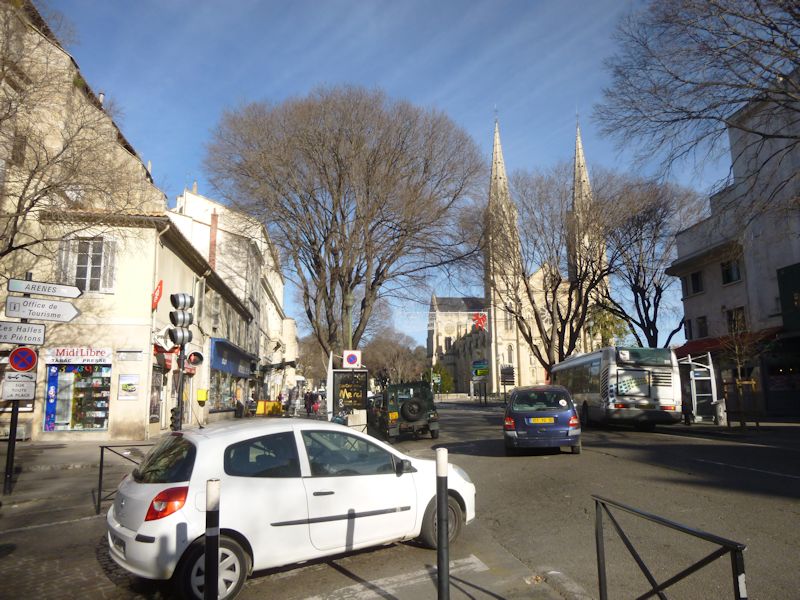
One block over, the central Boulevard Courbet and the Eglise Saint Baudile. Seemingly all car-worthy roads in Nîmes are one-way, and no one told the Volvo Navigator GPS people, who got all the roads right but all the directions wrong. We had to fall back on dead reckoning.

The Eglise Saint Baudile. St Baudilus is said to have been a fairly zealous Christian deacon who stopped in at pre-Christian Nîmes at the time of a pagan festival and grew so extremely angry that he knocked over the statues of the local gods, for which display the pagan priests, quite understandably, beheaded him. (His head bounced three times and each bounce produced a spring of curative waters.) The church is 'néo-gothique' from 1877 and needn't detain us.
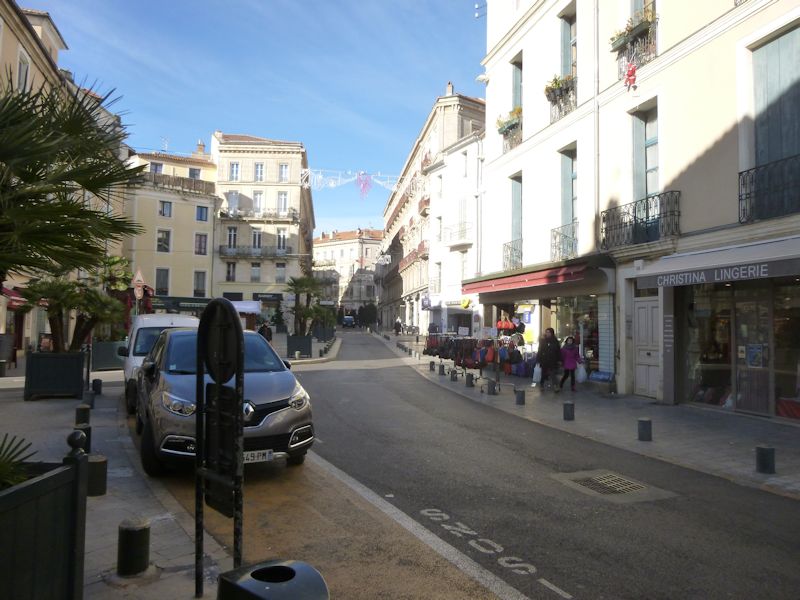
Westward into town -- we're looking for the cathedral for our first stop of the day.
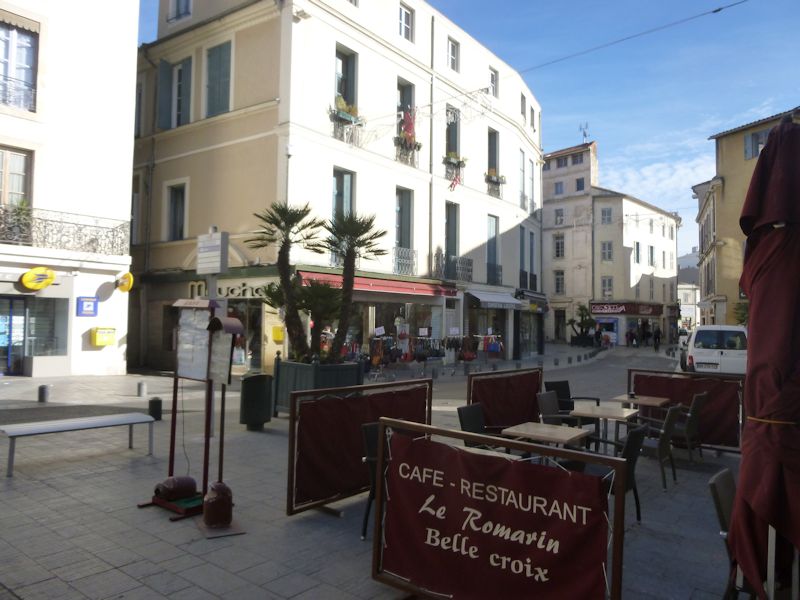
Nîmes, presently with a population of about 180,000 souls, boasted as many as 60,000 in Augustan times, back when it was the Roman Colonia Nemausus, named after a god or genie of the local Celtic tribe. Many of Julius Caesar's retired legionaries were settled here, to farm away their declining years and at the same time protect the vital Via Domitia Roman road between Italy and Spain.

The place of Belle Croix. The city still abounds in Roman leftovers, including the amphitheatre from the late 1st century, the temple called the Maison Carrée, and, nearby, the amazing 1st century Pont du Gard, 50m high over the river Gardon, part of the 50km aqueduct bringing water from the northern foothills into Nîmes.

A beautiful doorway. Nîmes prospered through to the 4th century, but with the contraction of the Western Roman Empire, it was overrun by Vandals, Visigoths, Merovingian Franks, and Umayyad Muslims from Spain, in that order, and then destroyed by Charles Martel's Franks to teach the Muslims a sharp lesson.
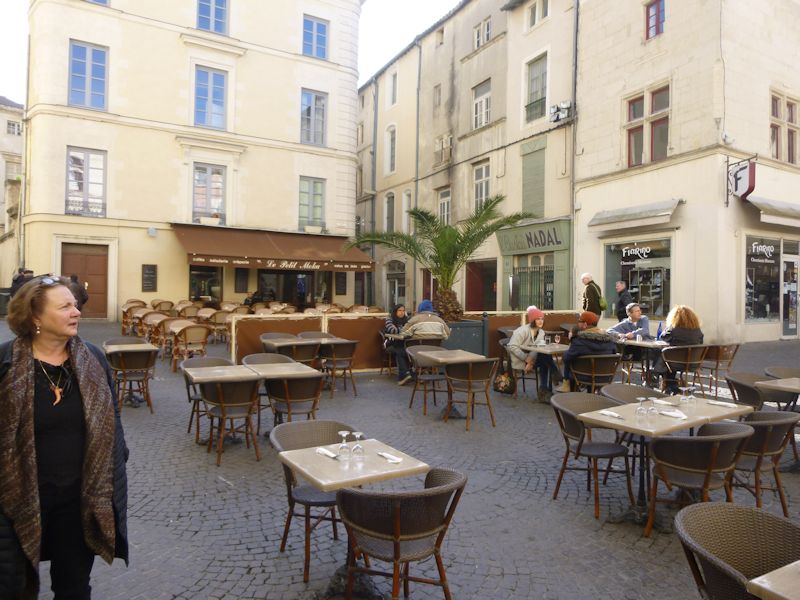
The Place aux Herbes. We'd passed through here last night, somewhat lost, and hadn't noticed that . . .

. . . we'd stumbled upon the cathedral and blundered on past it.
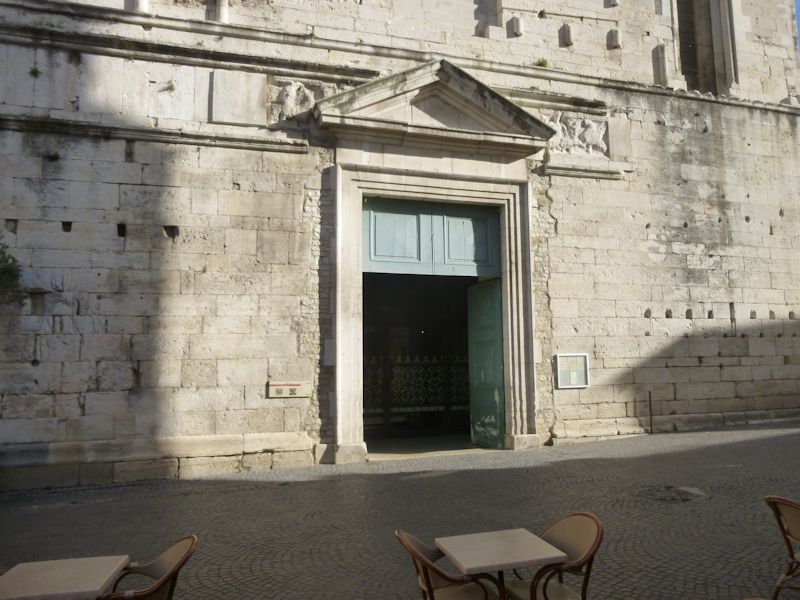
The Cathédrale Notre-Dame-et-Saint-Castor de Nîmes, or Nîmes Cathedral, was originally built in 1096, but was damaged by the Huguenots in the 16th century Wars of Religion and rebuilt as required at that time.

The belltower and parts of the façade remain from the 11th century Romanesque original but . . .
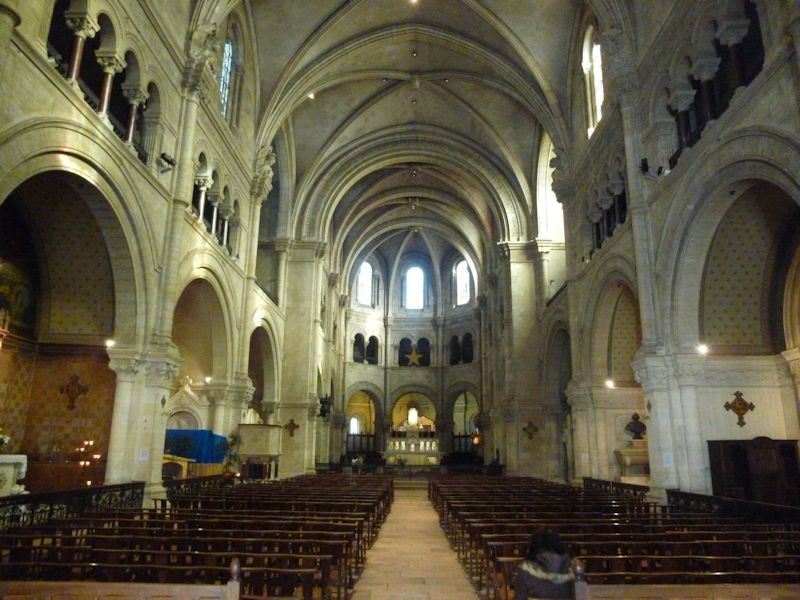
. . . the nave was restored in the 17th century, and much of the rest of the interior was renovated in the 19th century.
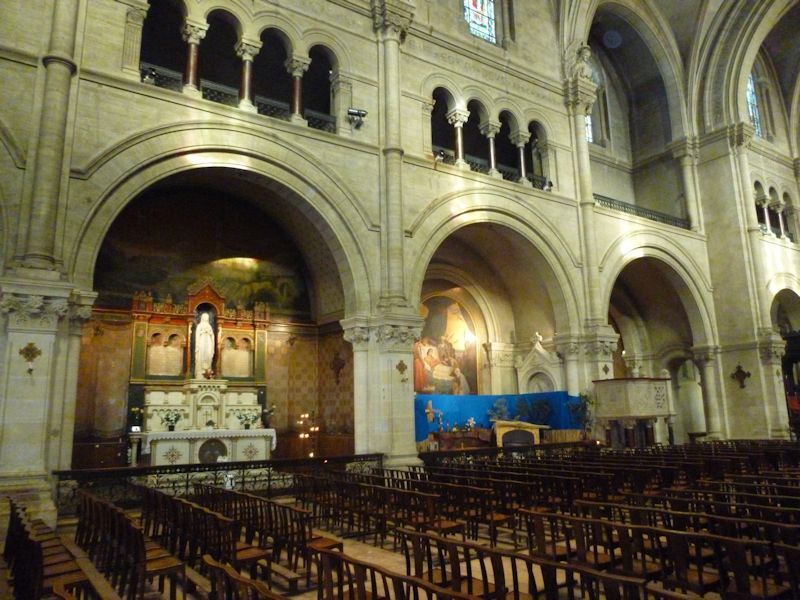
Side chapels
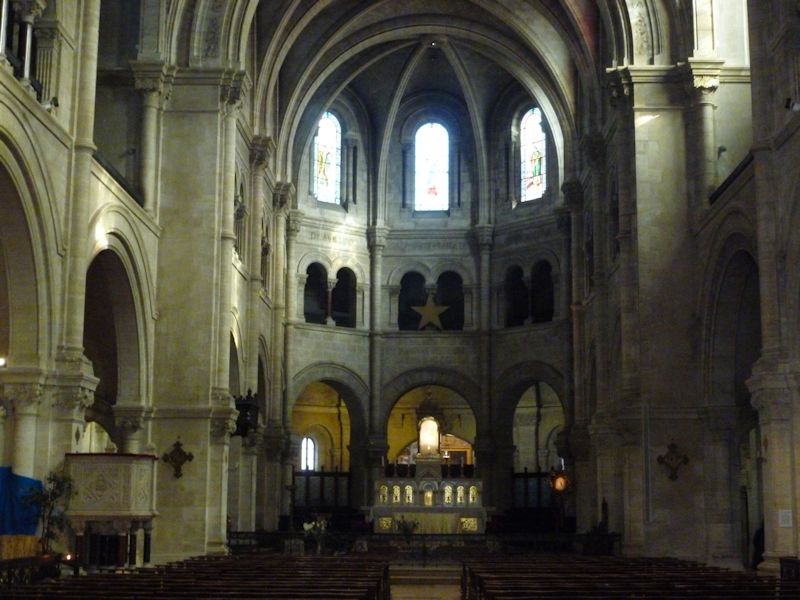
The presbytery and altar


Cathedral views

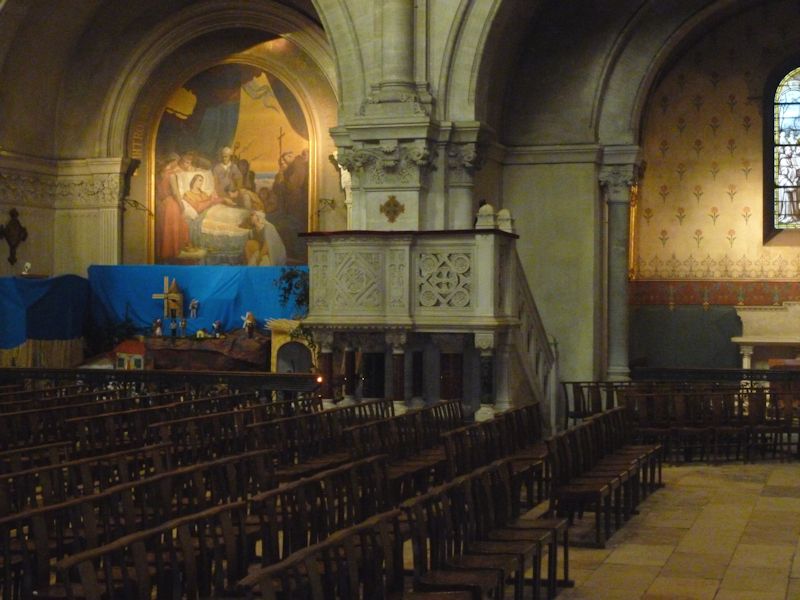
The ambo
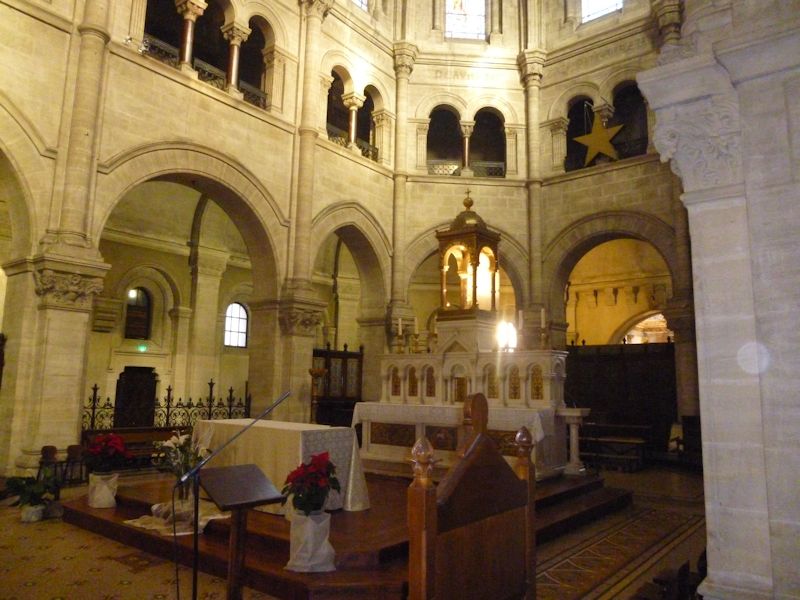
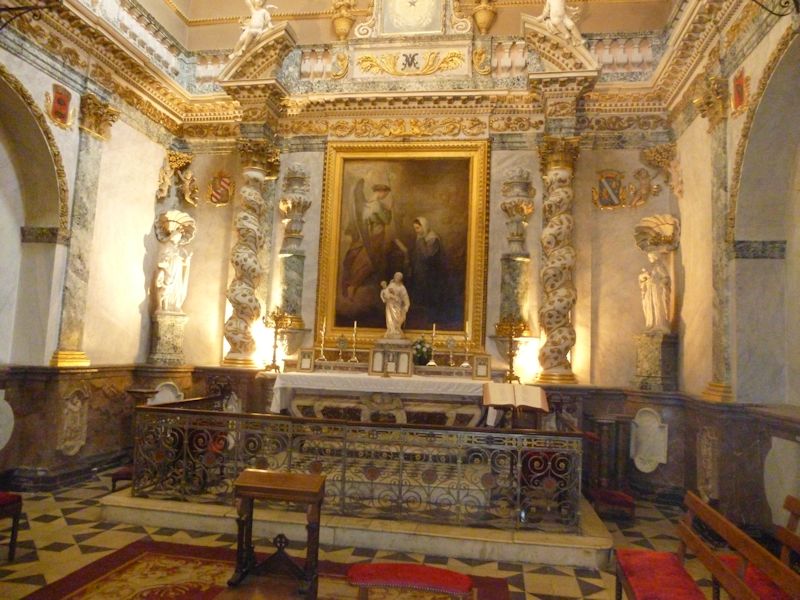
A fourth century sarcophagus and wonderful columns


The view from the courtyard next door
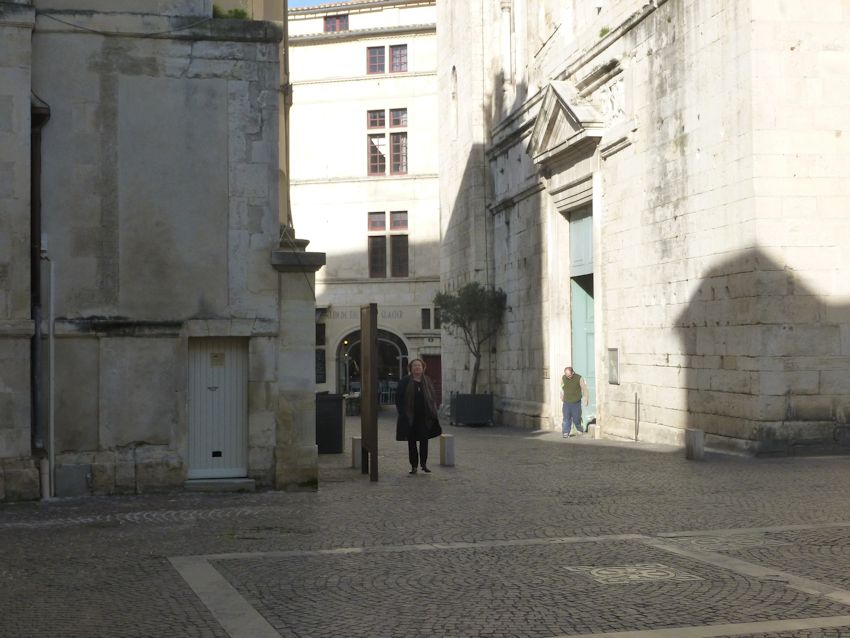
It's time to get a move on.

The Hôtel de la Grange, renovated in 1765
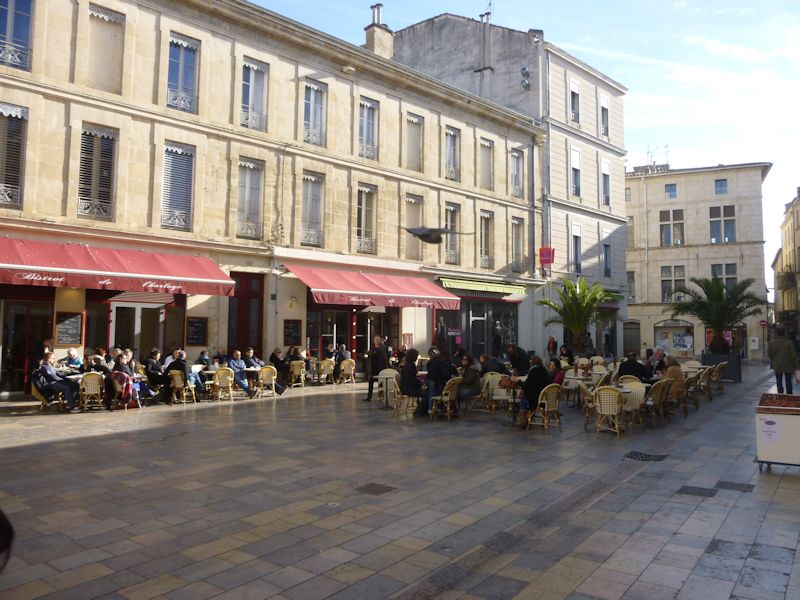
The Place de l'Horloge

And the Horloge
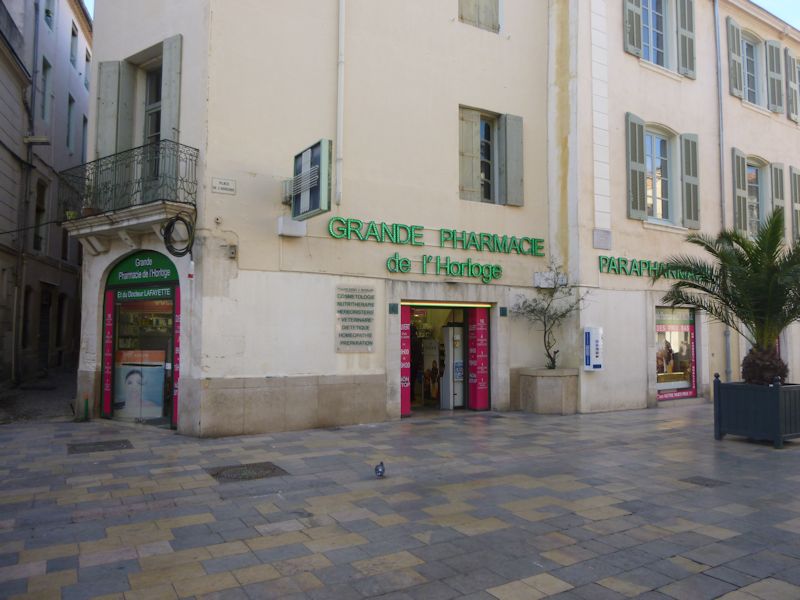
And the adjacent pharmacy, where some of our party are presently stocking up.
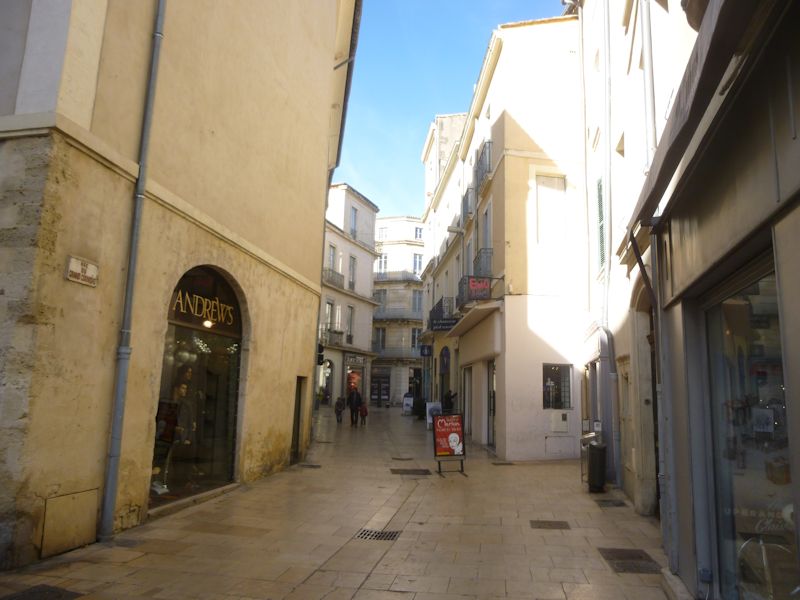
Always westward
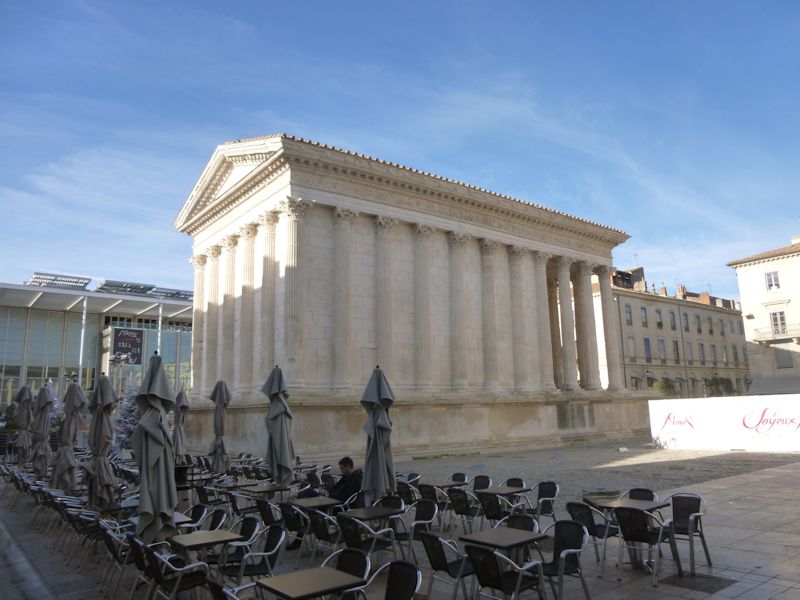
The Maison Carrée, or 'Square House', one of the iconic symbols of Nîmes

Heralded as one of the best-preserved Roman temples anywhere, it is traditionally dated to 19 BC under the direction of Agrippa the master architect, trusted general, son-in-law of Augustus, and progenitor of many horrible Roman emperors. (The site's own literature, however, dates the building to between AD 2 and 5.)
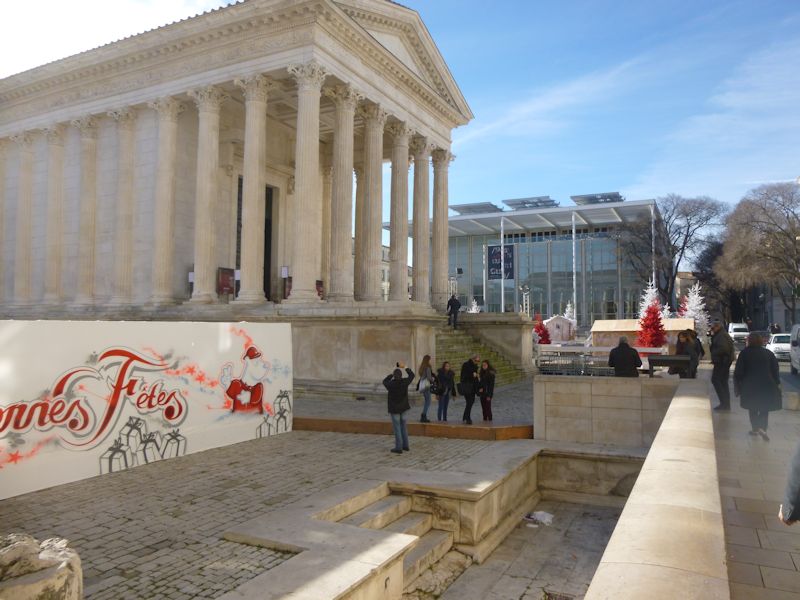
It's not clear to which god or gods this thing was devoted, maybe all of them, but it was dedicated to Agrippa's two sons, both of them Augustus' adopted heirs, both of whom, however, died young. (The building in the background is the Norman Foster-designed Carrée d'Art museum of contemporary art, opened in 1993.)
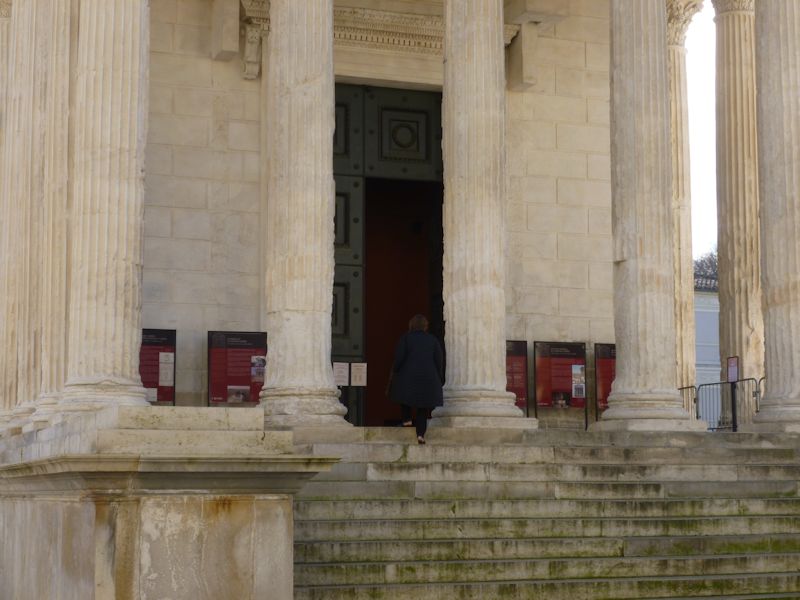
Kristin is investigating into the sanctum sanctorum.
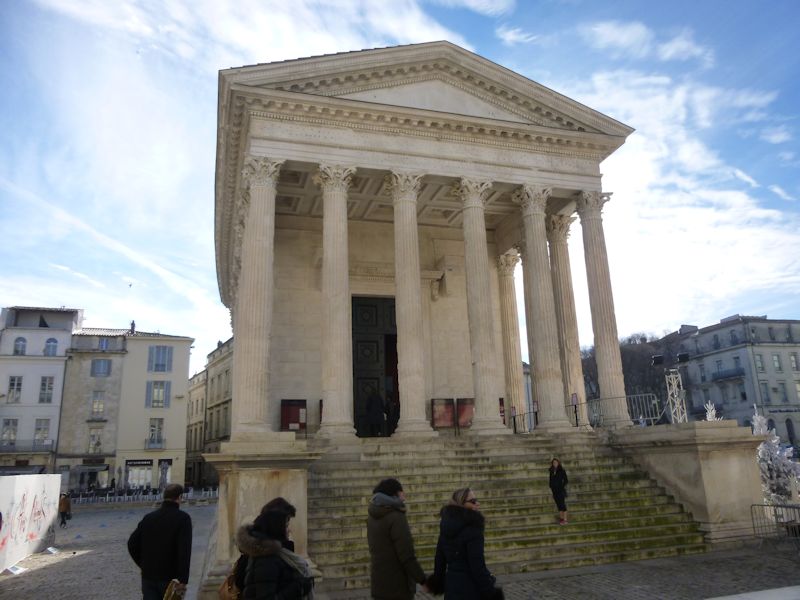
The temple dominated the original Forum and is probably really impressively solemn and sacrosanct in the shrine portion, but as it turns out . . .
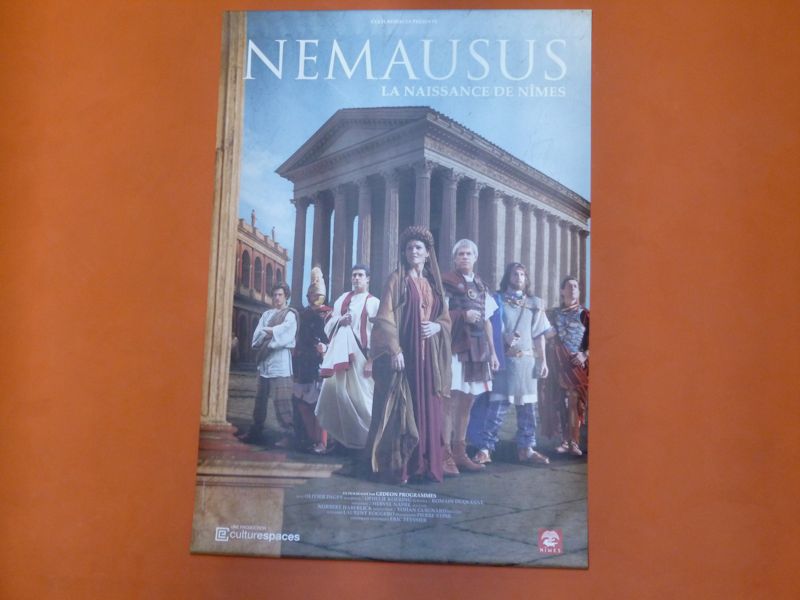
. . . it's presently a movie theatre.
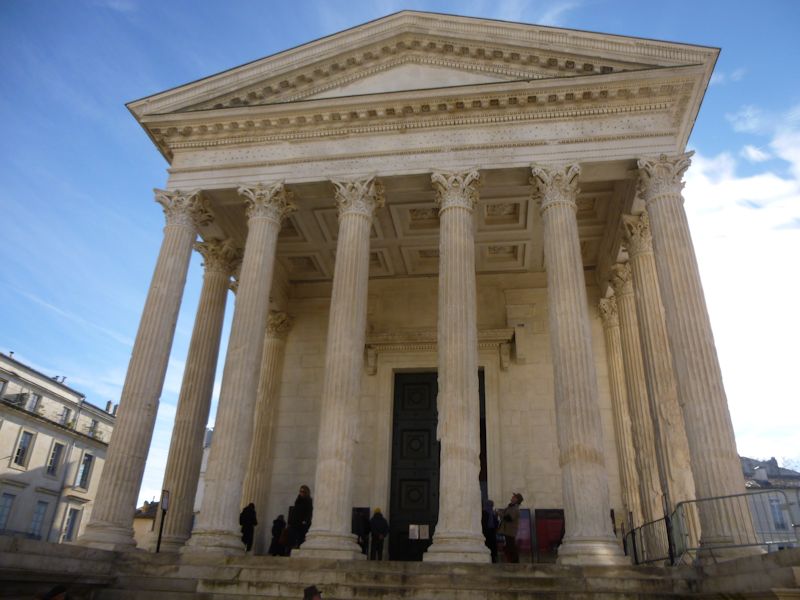
The Maison Carrée was mixed up with a lot of unrelated buildings stuck up over centuries and was used as a private family house from the 11th through the 16th centuries. Like much else, it was damaged during the Wars of Religion, and later saw service as a hostel, stables, and almost as a tomb for the Duke of Uzès, then as an Augustinian church in the 18th century and, after the French Revolution, as a granary.
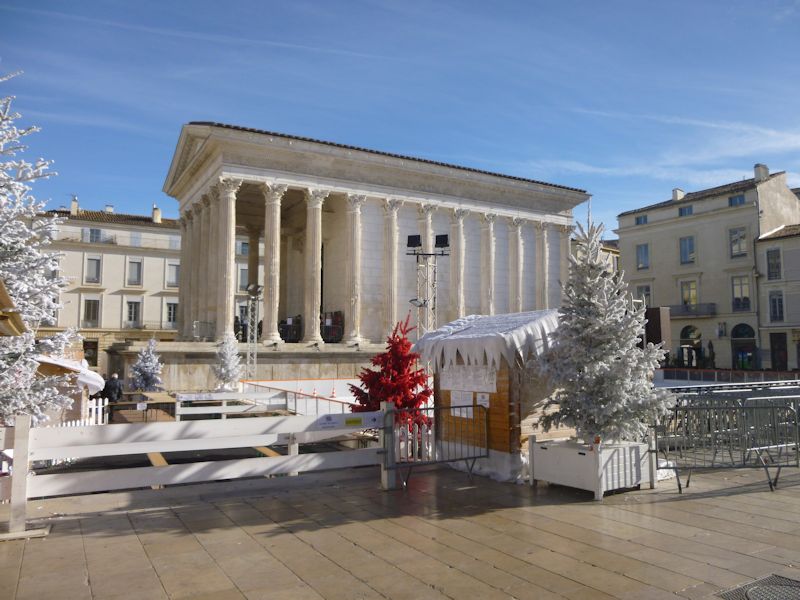
Beginning in the 1820s, however, Prosper Mérimée undertook the work of restoring it to its proper majesty, and it became the municipal archives and then the original city art museum. And according to Wikipedia Sarah Bernhardt played Phèdre here in 1903. Today, during the holiday season, it makes an elegant setting for the ice-skating rink alongside.

The Place d'Assas, formerly the communal self-laundry facilities, with washing basins fed by the fountain, was restructured in 1986 with a lot of attractive but inscrutable symbolism.

The Antonine Square, with an 1874 replica of a statue of Antoninus Pius who, born in 86 to a Roman Consul (who had been born in Nîmes) was Roman Emperor from 138 to 161 and father-in-law of his successor Marcus Aurelius. The locals (les Nîmois), under the impression at the time that Antoninus was responsible for the building of the famous Arena and other benefactions to the city, built this square and statue on the site of the basin at the end of the Fountain Canal.
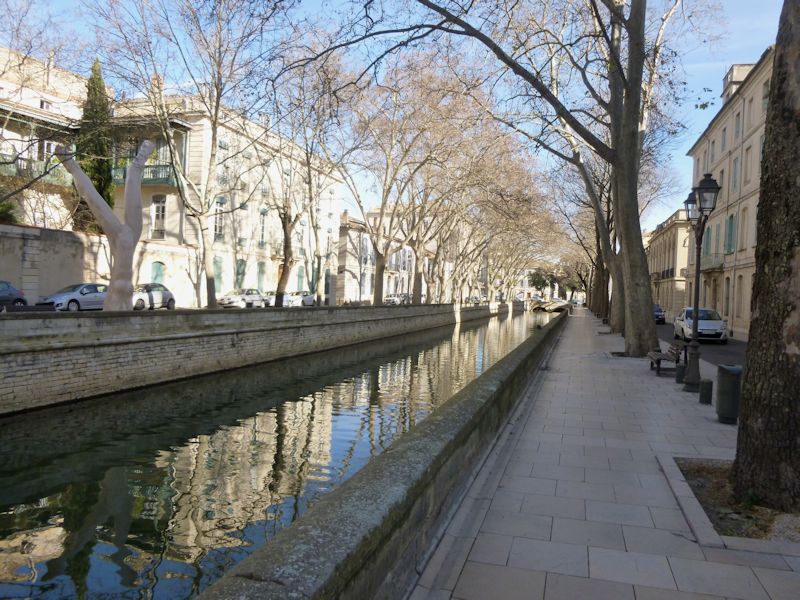
The Quais de la Fontaine are part of the 50km Roman aqueduct system that carried water from the mountains into the city.
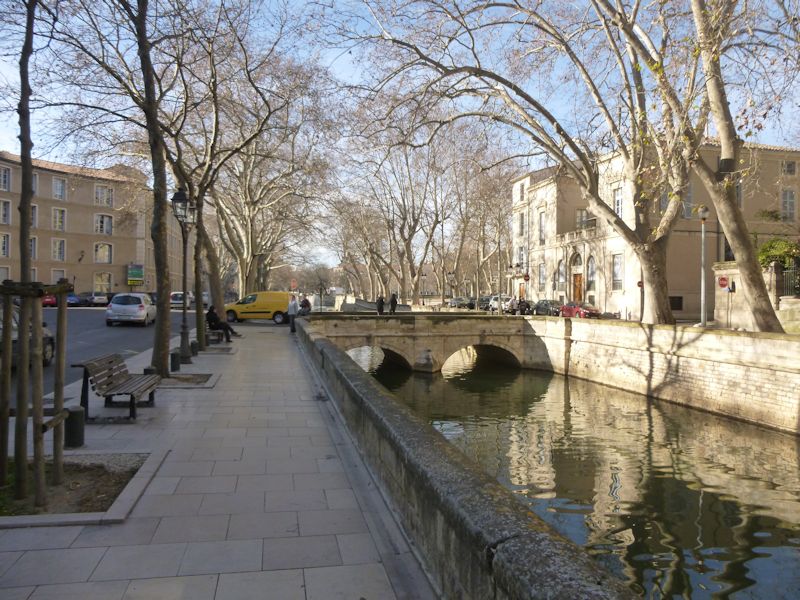
Still westward, towards . . .

. . . the Jardins de la Fontaine. The 'fontaine' refers to a freshwater source here, which in Gallo-Roman times supplied a system of thermal baths.
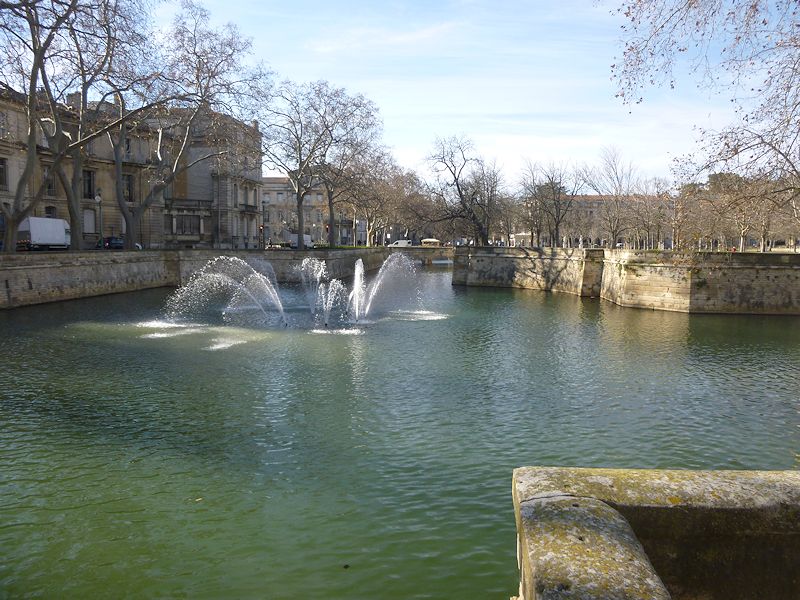
This very 18th century-looking, huge system of public gardens and decoration, was in fact created around 1745 and showcases some of the city's best Roman remains.




Statues of various water nymphs planted all round the . . .

. . . "Nymphaeum"

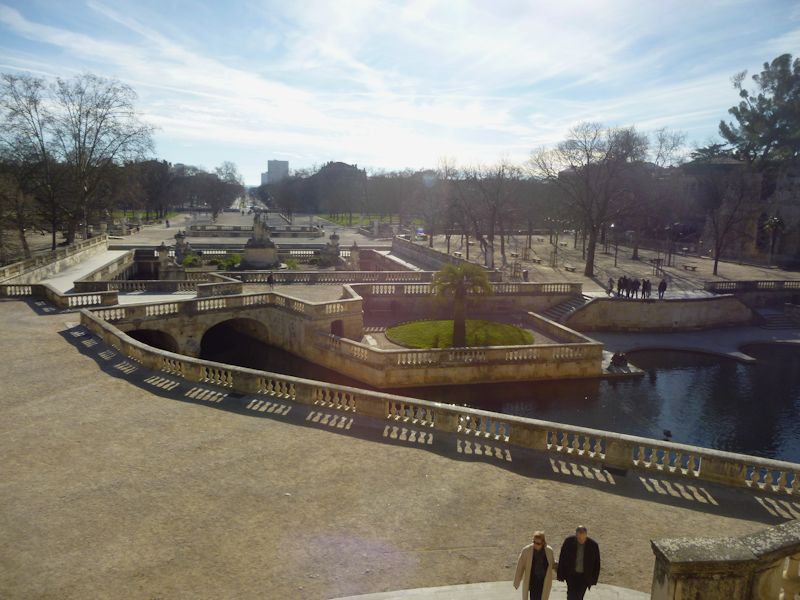
The length of the gardens, from the double staircase up the hillside of Mont Cavalier to the north
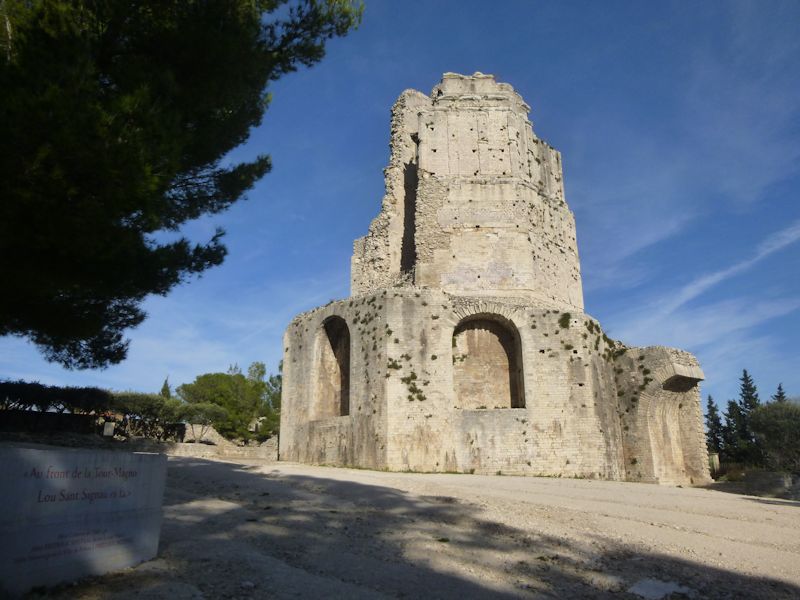
At the hilltop above the gardens, the Tour Magne or 'great tower', the only remaining part of the Augustan-era city fortifications and, at the high point above the city, a key part of them, though its odd base results from its having been transformed by the Romans from a pre-existing tower.
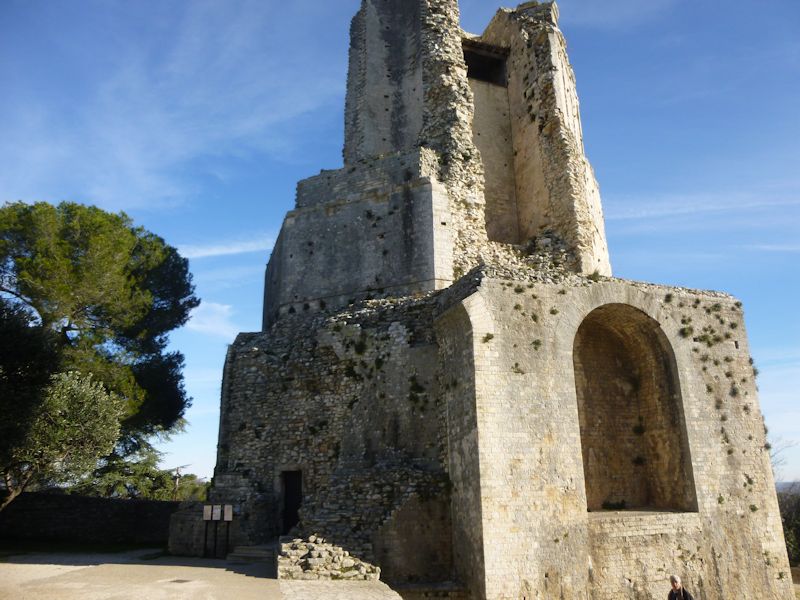
It's closed for lunch and we're in a big hurry, so we won't get to see the inside. Evidently the only original access was by a defensible ramp to the first floor, and then by an internal staircase to the terrace on top. It must have served chiefly as a watchtower but could also be defended from the terrace and could act as a secure refuge from attackers during a battle. (It was one story higher in Roman times.)

Back down the hill to the gardens
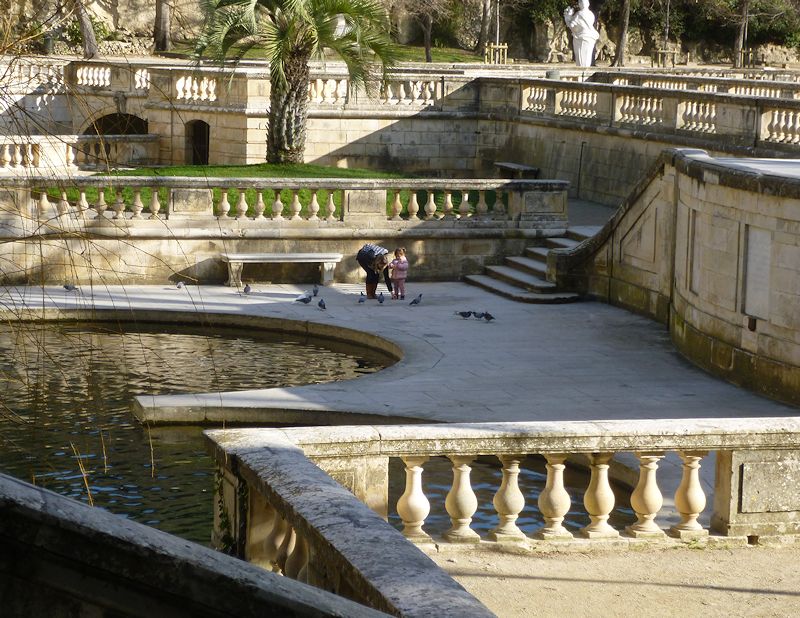
Feeding the birds

This is the other important Roman vestige within the Gardens of the Fountain, called the Temple of Diana, though in fact there's no indication to which god or goddess it might have been dedicated, if any.

Dug partially into the hillside of Mont Cavalier, it was part of a sanctuary dedicated to Augustus Caesar and his family, all part of the complex of the ancient nymphaeum, or Roman park surrounding sculptures and pools, such as those recreated nearby in the 18th century.
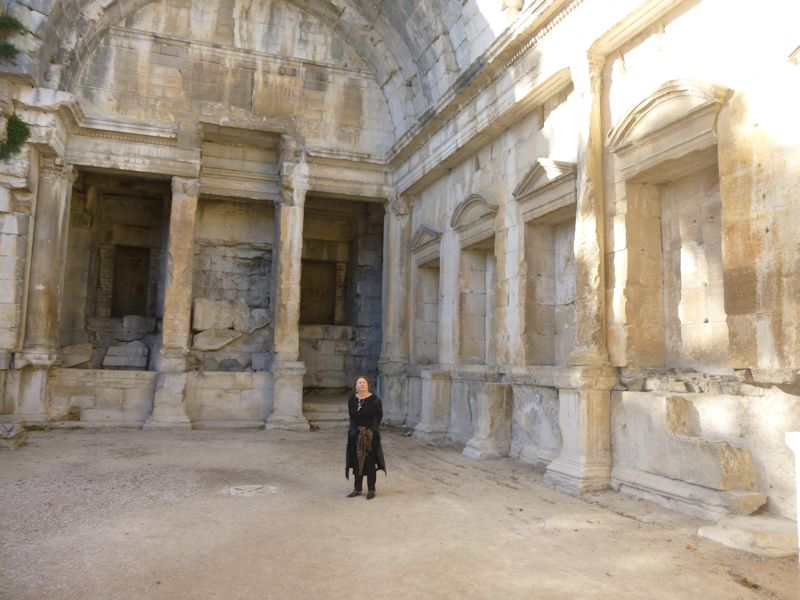
There appears to have been a library here as well. Between 991 and 1577 the buildings were used as a chapel for the convent of nuns of San Salvador, which probably prevented the place from disappearing altogether, but it was severely damaged during the Wars of Religion. As what wasn't?
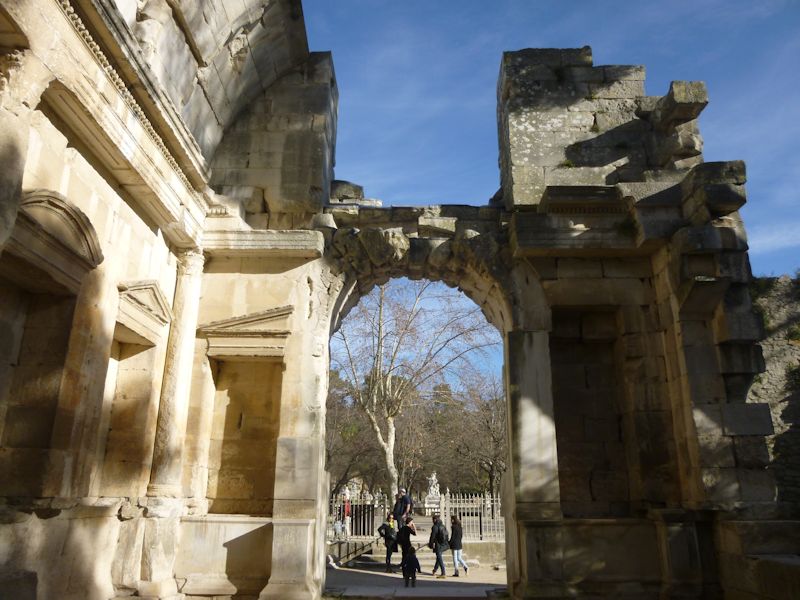

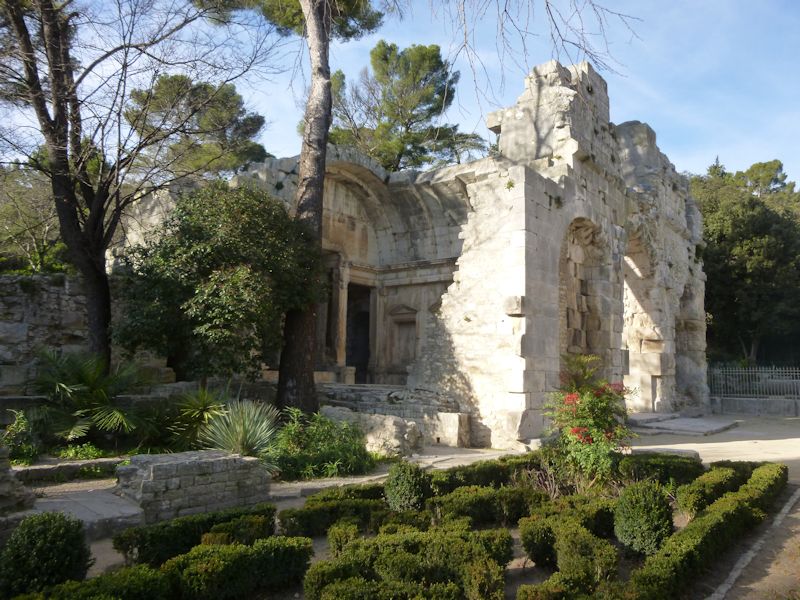
The so-called Temple of Diana

Back across the gardens

On the Boulevard Victor Hugo, here is the Eglise Saint-Paul. I'll have a look in; Kristin will wait for me.
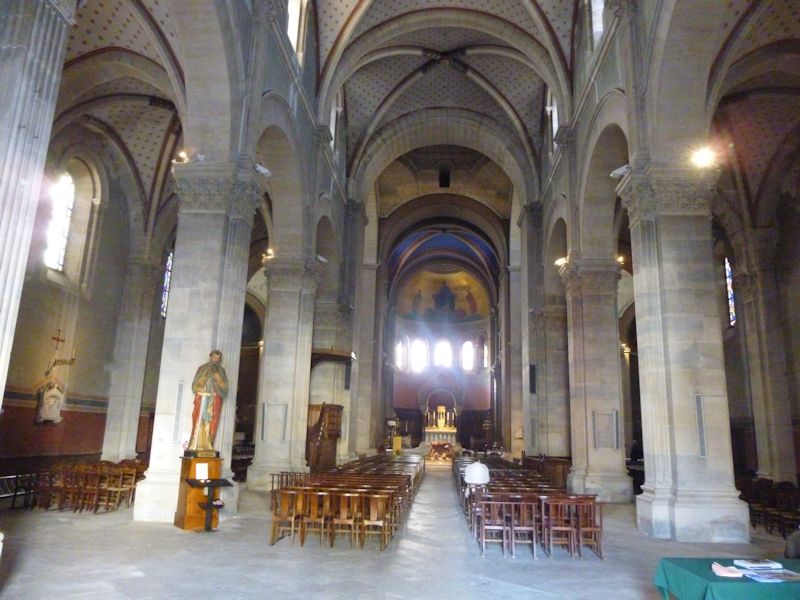
Kristin was right; but certainly it's well-intentioned. Evidently this is considered to be the first "neo-medieval" or "neo-Gothic" church in France, built in 1849, and that's all to the good.

The Place du Marché, not far from the amphitheatre

We're still not far from the arènes (or, perhaps, 'amphitheatre')

That must be the amphitheatre. Or, as it might be, the arena. We'll take a look.
      
    
 Feedback
and suggestions are welcome if positive, resented if negative, Feedback
and suggestions are welcome if positive, resented if negative,  .
All rights reserved, all wrongs avenged. Posted 22 February 2015. .
All rights reserved, all wrongs avenged. Posted 22 February 2015.
|
 Dwight Peck's personal website
Dwight Peck's personal website


































































